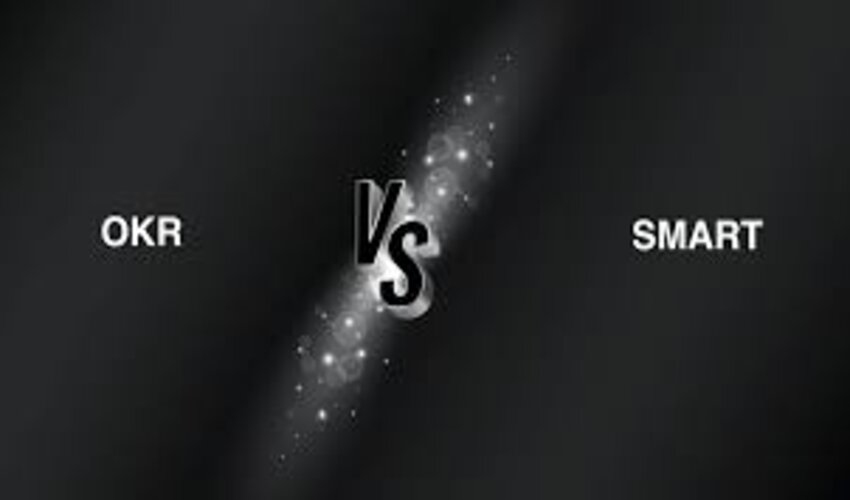
When it comes to goal setting, having a structured framework ensures that objectives are well-defined and progress is measurable. OKRs and SMART goals provide a systematic approach to goal setting, but they differ in their core principles and implementation strategies.
Understanding SMART Goals:
SMART goals are a widely adopted framework that helps individuals and teams set clear and actionable goals. The letters SMART stand for specific, measurable, attainable, pertinent, and time-bound.
SMART goals emphasize the importance of setting specific objectives. Rather than having vague aspirations, specific goals outline precisely what needs to be accomplished.
Measurability is a crucial aspect of SMART goals. By establishing concrete metrics and key performance indicators (KPIs), teams can track progress and evaluate success effectively.
SMART goals focus on setting realistic and attainable objectives. They consider the available resources, capabilities, and constraints to ensure that goals are within reach.
Relevance is a key factor in goal setting. SMART goals should align with the broader objectives of the team or organization. They need to contribute to overall progress and be meaningful in the context of the software team’s work.
Setting deadlines and time frames is a fundamental principle of SMART goals. They establish a sense of urgency and create accountability, enabling teams to stay focused and motivated.
Unleashing the Power of OKRs:
OKRs, on the other hand, provide a goal-setting framework that connects individual goals with the larger strategic objectives of the organization. The two parts of an OKR are the objectives and key results.
Objectives in OKRs describe the ambitious and qualitative goals that an organization aims to achieve. They are typically high-level and inspire teams to strive for excellence and innovation.
Key results are specific, measurable, and time-bound milestones that indicate progress toward achieving the objectives. They provide a clear framework for tracking success and enable teams to align their efforts effectively.
Comparing SMART Goals and OKRs:
While SMART goals and OKRs share some common traits, they have distinct differences:
Approach: SMART goals focus on setting detailed and specific targets, while OKRs emphasize aspirational and outcome-oriented objectives.
Timeframe: SMART goals are often set on an annual basis, whereas OKRs are revisited monthly and revised quarterly.
Measurement: SMART goals primarily rely on quantitative metrics, while OKRs can encompass both quantitative and qualitative key results.
Level of Detail: SMART goals require a more granular breakdown of objectives, whereas OKRs provide a broader and more strategic perspective.
Choosing the Right Approach:
Selecting the most suitable goal-setting approach depends on the nature of your team, organizational structure, and specific needs. Two common approaches are the bottom-up and top-down methods.
A bottom-up approach involves involving team members in the goal-setting process. This approach fosters collaboration, empowers individuals, and promotes ownership of the goals. By allowing each team member to contribute their insights and aspirations, the team can create a more comprehensive set of goals that align with the overall organizational objectives.
In a top-down approach, leaders or management define the goals and cascade them down to the team members. This approach ensures alignment with the broader organizational strategy and provides a clear sense of direction. While it may lack the same level of individual input, a top-down approach can be effective when there is a need for centralized decision-making and a more standardized goal setting process.
The Benefits of Alignment:
Regardless of the chosen framework, aligning individual goals with the organization’s objectives is crucial. When team members understand how their work contributes to the overall success of the business, they feel more engaged and motivated. This alignment enhances the sense of purpose and fosters a shared commitment to achieving the desired outcomes.
OKRs and SMART Goals in Action:
To gain a better understanding of OKRs and SMART goals, let’s explore a practical example:
Suppose a software team aims to enhance customer satisfaction through improved product quality. A SMART goal for the team could be to reduce the average number of bugs per release by 20% within the next three months. This objective is time bound, relevant, quantifiable, precise, and attainable.
This SMART goal has to be connected to a bigger corporate goal in order to be transformed into an OKR. For instance, the key result could be achieving a Net
Promoter Score (NPS) of 9 or higher within six months. By aligning the goal with a tangible business outcome, the team gains a deeper understanding of how their work directly impacts the organization’s success.
Overcoming Challenges and Gaining Clarity:
Many teams face challenges when developing quality OKRs. They often lack the necessary information to create meaningful goals tied to business outcomes. In such cases, settling for points-based approaches or focusing solely on output can hinder progress.
To overcome these challenges, it is crucial to initiate conversations and establish clear communication channels. By fostering a deeper understanding of how individual goals contribute to the organization’s success, teams can develop more effective OKRs and align their efforts accordingly.
Conclusion:
In conclusion, both OKRs and SMART goals offer valuable frameworks for goal setting in a software team. SMART goals provide a detailed and measurable approach, while OKRs link objectives to strategic business outcomes. Choosing the right approach depends on factors such as organizational structure, team dynamics, and the need for alignment with broader objectives.
To leverage the benefits of both frameworks, teams can adopt a hybrid approach that incorporates the strengths of each methodology. By aligning individual goals with organizational objectives and fostering a culture of continuous improvement, software teams can enhance their goal-setting practices and drive success.
Author’s Bio:- Finance Admit is a Professional Finance Website. Here we will provide you with only Finance related information, which you will enjoy very much. We are committed to providing you with the best Finance information, with a focus on reliability and Finance niche articles. We are working to turn our passion for Finance into a booming online website.
